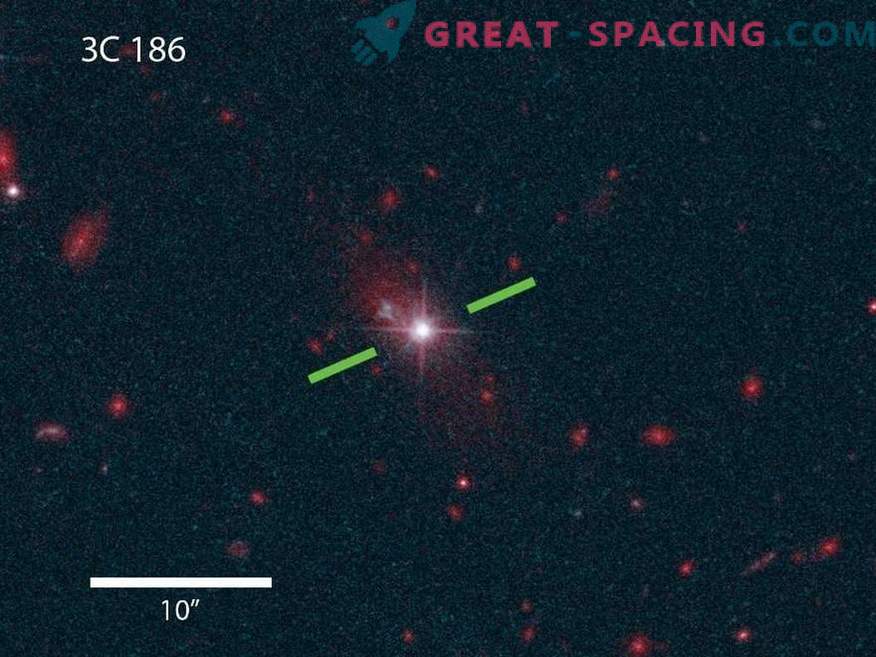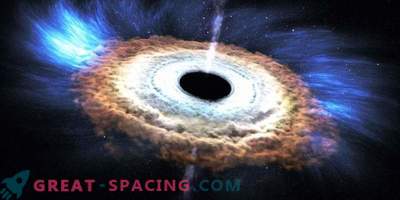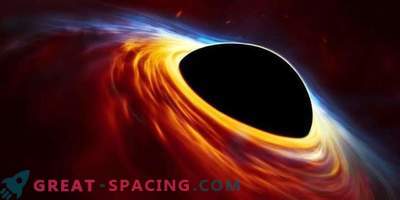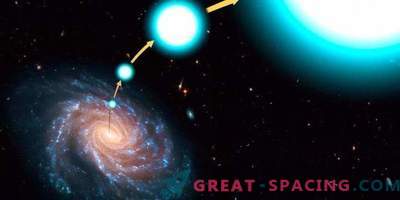
We have already written about orphan planets (“billions of orphaned planets”) and lonely stars (“Galactic escape: from where it escaped hyper speed star? ”). Now we present you a new fugitive - a supermassive black hole!
Thrown from home

Objects in outer space are moving. Usually they are limited to the orbit established since the formation. However, there are cases when, due to a certain activity (stellar explosion or a galactic collision), a star or planet is forcibly ejected from its native territory and sent to wander in space. But what should have happened to the ejection hit a giant black hole?
Today we will talk about the galaxy 3C186, 8 billion light years away from Earth. The standard assumption is that a supermassive black hole can be found in the center of each sufficiently large galaxy. However, when scientists studied a particular galaxy using the Hubble Space Telescope, they saw something very strange. There is a supermassive black hole, but it is 35000 light-years distant from the galactic center! How so?
What does a runaway look like?
A supermassive black hole is 1 billion times more than solar massiveness. It is believed that it was originally formed in the core of 3C186, and then some kind of powerful event caused the release. Analysis shows that the black hole is now moving through space at a speed of 7.6 million km / h. This is enough for the next 20 million years to break out of the galaxy. Researchers believe that the ejection of a black hole requires the energy of a simultaneous explosion of 100 million supernovae. But where to get such a stock?
The solution lies in the galaxy.

Real photo 3C186
The answer was found in the characteristics of the galaxy itself. During the review, we noticed that 3C186 had arcuate formations called tidal tails. These features appear due to the action of gravitational forces in the period of galactic fusion.
Everything suggests that about 1-2 billion years ago there was a collision of two galaxies. Their central supermassive black holes began to rotate around each other, gradually reducing the distance until they collided. At that moment, they threw out gravitational waves.
The idea is that the radiation of these gravitational waves was carried out in one direction. At the point of the final merger, the radiation ceased, and the supermassive black hole created flew in the opposite direction.
Postscript
If scientists are right in their conclusions, then we received confirmation of the process of merging supermassive black holes, as well as the possibility of their escape from the galactic center.











































